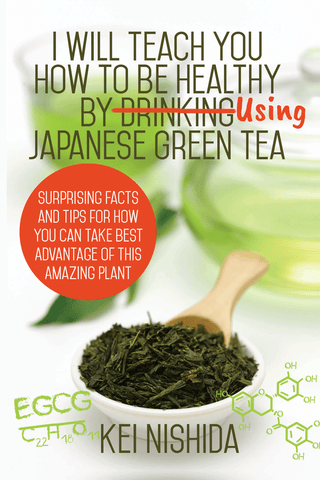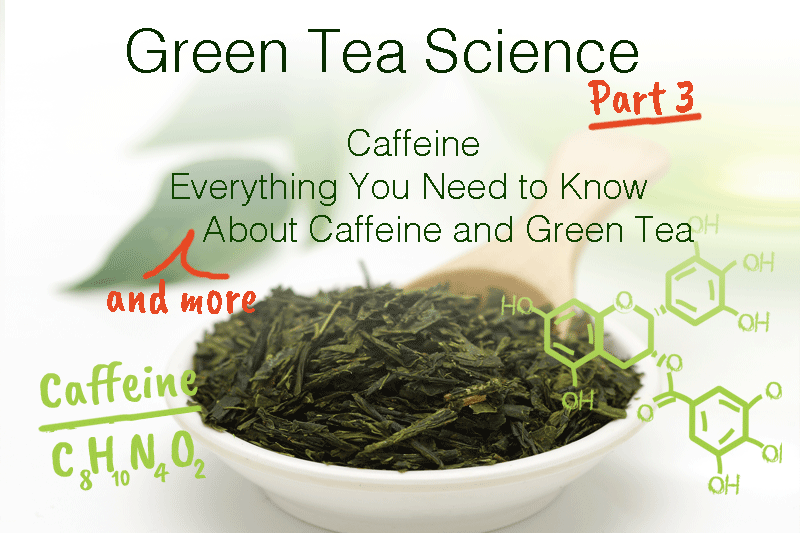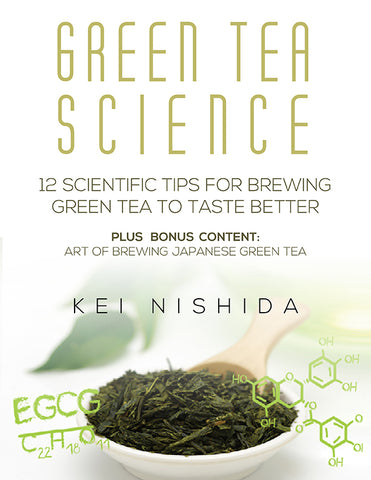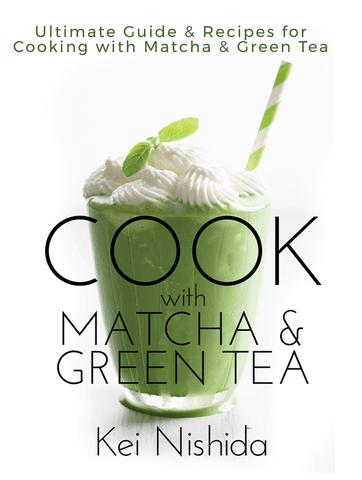Green Tea Science Part 1: Polyphenols, Catechins, and EGCG - 15 Commonly Asked Questions and How You Can Benefit

Although the popularity of green tea in the Western world is a fairly recent phenomenon, the highly beneficial nutritional value has enjoyed a favorable reputation throughout many parts of Asia for thousands of years. Only recently is scientific research beginning to understand green tea's health benefits in relation to its high concentration of phytochemicals, known as polyphenols, which include subclasses of tannins and gallic acid.
In this article, I will address commonly asked questions about polyphenols, catechins, epigallocatechin-3-gallate (EGCG), tannin, gallic acid and caffeine.
Because this article ended up being quite long, I have broken the articles into multiple parts. Here is a list of questions and topics I cover in this entire series so that you can skip to the question you want to read.
Part 1-1: Polyphenols and Green Tea - 8 Answers to Commonly Asked Questions and How You Can Benefit
- What are polyphenols?
- Green tea has so many health elements. What is the difference between catechins, tannins and polyphenols in green tea?
- How many polyphenols are in green tea?
- Compared to other teas, how many polyphenols are in green tea?
- Who should take polyphenols?
- What are polyphenols good for?
- Are there side effects associated with polyphenols?
- What is the most effective way to take polyphenols?
Part 1-2: Catechins and Green Tea - 8 Answers to Commonly Asked Questions and How You Can Benefit
- What are catechins?
- What is the difference between catechins, ECG and EGCC?
- How many catechins are in green tea and other teas?
- Who should take catechins?
- What diseases are catechins good for?
- Are there side effects of catechins?
- What is the most effective way to take catechins?
- What is the difference/relationship between tannins, polyphenols and gallic acid?
- What are tannins and how do they affect humans?
- What is gallic acid and how does it affect humans?
- How many tannins and gallic acid are in green tea, and how does the amount compare to other types of tea or food?
- Who should take tannins and gallic acid?
- Are there any side effects associated with tannins and gallic acid?
- What is the most effective way to take polyphenols?
Part 3 : Caffeine – Everything You Need to Know (and more) about Caffeine and Green Tea
- What is caffeine?
- Why does green tea have caffeine?
- Is the caffeine in green tea good or bad?
- How long does green tea caffeine last?
- Does caffeine in green tea help individuals lose weight?
- Does green tea without caffeine help with losing weight?
- How are caffeine levels being tested in tea?
- How much caffeine is in green tea?
- What determines lower or higher caffeine level on green tea?
- Are there green tea that are caffeine free?
- How to make green tea caffeine free?
- Is decaffeinated green tea as good as regular green tea?
- As part of decaffeination, does any other element get lost?
- Which type of green tea has the most caffeine?
- Compared to other tea, how much caffeine is in green tea?
- Compared to coffee how much caffeine is in green tea?
- What are the differences between drip coffee, espresso and green tea in terms of caffeine?
- Compared to coke, how much caffeine is in green tea?
- Compared to chocolate, how much caffeine is found in green tea?
- Where can I find low caffeine Japanese green tea?
- Where can I find high caffeine Japanese green tea?
Polyphenols and Green Tea - 8 Answers to Commonly Asked Questions and How You Can Benefit

Polyphenols
1. What are polyphenols?
Also known as phenolics, they are chemical compounds that occur in plants. They have over one phenol unit or building block in every molecule. They give plants their color and help protect them from insects. Foods or drinks containing polyphenols will have an astringent bite to their flavor.
There are 8,000 types of polyphenols that have been found in edible plants, and half of them belong to a group called the flavonoids that is further subdivided into six categories.
Back To Top
2. Green tea has so many health elements. What is the difference between catechins, tannins and polyphenols in green tea?
One difference between a catechin and tannin is size: Tannins are larger. A catechin with over 20 or more hydroxyl groups (-OH) is classed as a tannin.
Coffee and tea are the main source of tannins in the human diet. Tannins help give coffee and tea their flavor.
Back To Top
3. How many polyphenols are in green tea?
EGCG, however, is the most abundant catechin in all of the teas. Epicatechin gallate (ECG) is the second most abundant, with numbers ranging from 22 mg per 100 ml to nearly 80 mg per 100 ml.
Back To Top
4. Compared to other teas, how many polyphenols are in green tea?
Conversely, black tea contains a family of polyphenols called theaflavins that does not occur in green tea.
Back To Top
5. Who should take polyphenols?
Back To Top
6. What are polyphenols good for?
Polyphenols may help fight some types of cancer by reducing the size and/or number of tumors. Researchers are studying some polyphenols, like quercetin and resveratrol, to learn about their anti-aging and cancer-fighting properties.
The polyphenols found in green tea have been linked to a reduced risk of Parkinson’s disease. Other polyphenols found in vegetables and fruits may slow down the development of Alzheimer’s disease.
Polyphenols help prevent low-density lipoprotein (LDL) cholesterol from reacting with free radicals, thus slowing the development of atherosclerosis. Scientists have found that a diet based on plant foods reduces the likelihood of developing cardiovascular disease.
Researchers believe that polyphenols might prevent osteoporosis and some lung diseases, such as asthma. More studies need to be done, however.
Back To Top
7. Are there side effects associated with polyphenols?
Green tea, however, can cause drug interactions. People taking anti-depressants, birth control pills, blood-thinners, some heart medications, and some antibiotics should talk to their doctor before drinking green tea or taking supplements made from green tea.
Back To Top
8. What is the most effective way to take polyphenols?
By contrast, green tea like Issaku Green Tea, one of the premium green teas from Japan, is an excellent source of polyphenols. Other excellent sources of polyphenols include berries, coffee, black tea, dark chocolate, red wine and artichoke.
Catechins and Green Tea - 8 Answers to Commonly Asked Questions and How You Can Benefit


Catechines EGCG
1. What are catechins?
Botanists believe that catechins are used by the plant to protect them against other plants growing too near and competing for nutrients in the soil.
Back To Top
2.What is the difference between catechins, ECG, and EGCC?
EGCG in particular is a strong antioxidant. Scientists believe it is 25 to 100 times more powerful than the antioxidants vitamins C or E. Antioxidants are substances that protect the cells against being damaged by free radical molecules. These molecules lack electrons and grab them from other molecules, including DNA. This causes damage that can lead to disease. EGCG has been seen to inhibit the growth of breast, lung, liver, and colon tumors. It kills cancer cells outright and supports brain function by helping the brain create more nerve cells, or neurons, in the hippocampus, which is responsible for memory. This was seen in mice but holds promise for human beings. EGCG also helps in weight loss and prevents cardiovascular disease.
EGCG is the main catechin found in green tea. Scientists believe that catechins work because they bind to proteins and keep bacteria and viruses from clinging to cells and attacking them. Catechins also fight the poisons produced by bacteria as well as toxic metals, such as lead and mercury.
Back To Top
3.How Much catechins are in green tea and other teas?
The amount of catechins in green tea depend on when the tea was picked and the age of the leaf. Tea picked in the spring has 12 to 13 percent of catechins, while summer-picked tea has 13 to 14 percent. This higher level also explains why summer-picked tea has a more astringent taste. Younger leaves also have more catechins than older leaves.
A very high quality type of Japanese green tea called Issaku is rich in catechins. It also has a uniquely sweet taste because it is fertilized with sugar cane.
Back To Top
4.Who should take catechins?
Catechins are digested through the gastrointestinal tract, specifically through the first part of the small intestine, or jejunum and the liver.
Back To Top
5.What diseases are catechins good for?
Back To Top
6.Are there side effects of catechins?
Back To Top
7.What is the most effective way to take Catechins?
When it comes to teapots, many connoisseurs prefer glass when it comes to brewing green tea. Glass lets the drinker see the color and clarity of the tea, and watch the tea leaves unfurl in the hot water. Green tea tastes better in a smaller teapot, gives the drinker more control over the temperature and the time the leaves steep and lets them resteep the leaves.
Catechins provide health benefits for nearly ever system in the body. They support the functioning of the nervous system, help in weight loss and reduce the risk of obesity. They offer some protection against certain forms of cancer, and lower the risk of Type 2 diabetes. They support the health of the liver, the organ in the body responsible for removing toxins and dilate the blood vessels. This allows for an improved flow of blood and therefore nutrients throughout the body.
Related Articles You May Be Interested In
Get Free Download
If you have ever thought that Green Tea is an ìacquired tasteî or that it is ìtoo bitterî to enjoy, weíre here to change your mind! We want everyone to experience the health benefits of Green Tea and show you that this can be an amazing, refreshing, and delicious drink when made correctly. With just a few tips on how to brew this powerful leaf, we can change your mind about the taste and enjoyment of drinking Green Tea.
Donít miss out on the health benefits of tea!
- Improve health
- Increase brain function
- Regulate weight
- Lower your risk of cancers
- Reduce risk of heart disease
- Lowers risk of diabetes
We know that you will love this tips to brewing tea and getting the most flavor and elegance out of every cup. Sign up for our newsletter and get this great informative manual on brewing green tea. You will learn what it is that makes it one of the most popular beverages in the world.
The E-Book also includes the chapter of Kei Nishida's book, "Art of Brewing Japanese Green Tea" where he teaches you how to brew hot and cold Japanese Green Tea.
Also in Japanese Green Tea Lovers in India
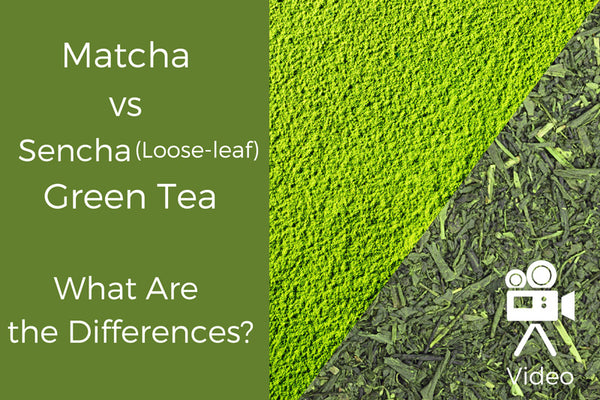
TYPES OF TEA: MATCHA VS SENCHA GREEN TEA: WHAT ARE THE DIFFERENCES?
When it comes to different types of tea, matcha and sencha green tea are two many people have questions about! Get answers in this post.
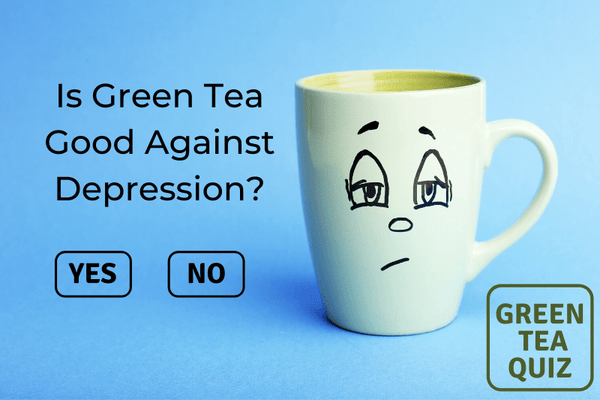
Is Green Tea Good Against Depression?

What is the best way to store your matcha & Japanese green tea?
5 Essential Storage Rules for Matcha and Japanese Green Tea
Read on to learn how to store matcha the proper way to ensure that you get the most out of this ancient elixir.


